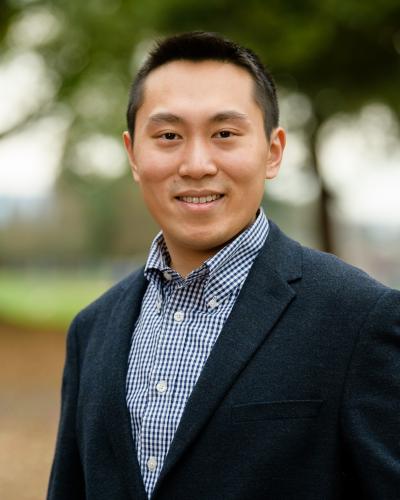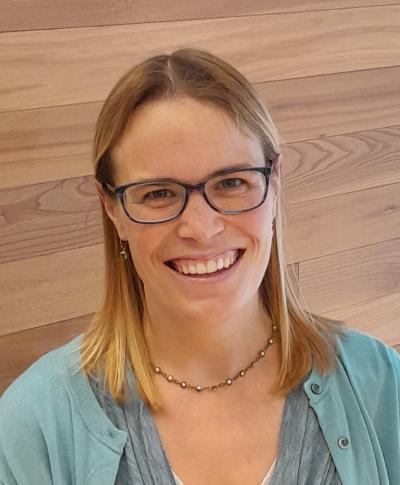On March 9, 2020, Alpha Lee, Ph.D., and his two fellow co-founders at PostEra AI were living out of an Airbnb in Silicon Valley, trying to get their AI-driven biotech startup off the ground. While scrolling through Twitter, they noticed a tweet from Martin Walsh, a scientist at U.K.-based particle accelerator Diamond Light Source. Walsh and another group at Diamond Light had created the structure of a key SARS-CoV-2 virus enzyme.
“We saw this and thought, ‘This is a beautiful set of data,’” Lee recalls. Seeing a potential application for PostEra’s drug synthesis machine learning platform, he replied to Walsh, “Would love to explore … whether our ML/synthesis-aware generative models can help. Happy to work on it if you need extra hands!”
Thus began the COVID-19 Moonshot project, a massive international open science collaboration between universities, companies, nonprofits like the Wellcome Trust and hundreds of scientists, to identify new drugs capable of blocking SARS-CoV-2. Earlier this month, the consortium published an article in Science detailing its methods and the results of its work so far, which include a patent-free lead compound. Moonshot is continuing as part of the AI-driven Structure-enabled Antiviral Platform, or ASAP, consortium, which is using AI and computational chemistry not only to discover new COVID-19 drugs but also therapies for other viruses.
What is the COVID-19 Moonshot project, and how did it start?
AL: The COVID-19 Moonshot initiative is a nonprofit, open science drug discovery initiative against SARS-CoV-2’s main protease that started in 2020. Back then, we already knew that the main protease is likely to be an important validated target for antivirals, but at that time, there were no therapeutics or even late-stage development against that target.
The impetus for the project was a single crystallographic fragment screen, which is a data set of pieces of molecules—you can think of this as a molecular jigsaw puzzle sitting in the binding site of the main protease. Our team at PostEra saw this beautiful dataset being shared ahead of actual publication, actually on Twitter. And then we got really excited about it and thought this might be an opportunity where we can actually crowdsource the imaginations of a lot of chemists, who at that time were working from home, to suggest what kind of combinations of these jigsaw pieces can nucleate towards a potent inhibitor, and going forward, a drug.

[PostEra] had this technology that could help do medicinal chemistry a lot faster with machine learning, and making molecules faster in particular. So we launched this crowdsourcing portal, inviting people to submit ideas on how they can turn these jigsaw pieces into a complete picture.
How many ideas were submitted? How did you pick the best one?
AL: We thought it would be a niche exercise, but many hundreds of people actually submitted tens of thousands of designs. And through iterative cycles of people submitting the compounds, and us making and testing compounds accelerated by computational chemistry and machine learning, we iterated toward a preclinical candidate.
AVD: As Alpha mentioned, there were a lot of ideas coming in. But the challenge was whittling down to what was actually doable because we had a very limited budget and we couldn’t make all of those ideas. So there needed to be some very stringent prioritization. That’s where machine learning played a big role: It helped us decide where we would go with all these different ideas and how we would get to a compound that was actually synthesizable and cheap to make.
What other hurdles did you face?
AVD: In the early Moonshot days, it was quite a unique experience, because people were incredibly keen to contribute. While being very enriching, it came with its own unique challenges. We didn’t have any logistics centers and it took a whole lot of effort from the early partners to set something up. Alpha’s website helped a lot, obviously, but the other thing that was absolutely crucial was the logistics center that we used to synthesize the compounds and distribute them to all these different collaborators worldwide. I’m tempted to say we wouldn’t have been able to progress without all that logistics support. It also does take a lot of discipline to stay involved.
Tell me about the compound that’s on its way to the clinic. How does it work?
AVD: The compound, called DNDi-6510, is based on an earlier molecule described in the [Science] paper. There were further medicinal chemistry efforts to optimize bits and pieces of it.
DNDi-6510 inhibits a virus enzyme, the SARS-CoV-2 main protease, and thereby interrupts viral replication. The same protein is targeted by other protease inhibitors that are already approved for use in COVID-19 patients, including nirmatrelvir [a component of Pfizer’s Paxlovid] and ensitrelvir [in Shionogi’s Xocova, which is approved in Japan]. However, compared to these molecules, DNDi-6510 binds in a different manner to the main protease, which will expand the arsenal of SARS-CoV-2 antivirals and help to mitigate risks of being without efficient treatment for future mutated viral variants.
Where in the development pipeline is DNDi-6510?
AVD: No papers are published yet on late-stage lead optimization and preclinical development, though we are currently drafting them. We are working towards clinical trial agreement readiness and an investigational new drug application. We anticipate being ready to launch a phase 1 clinical trial in 2025.
Besides your lead preclinical candidate, what else came out of the data generated by the project?
AL: Shionogi independently made reference to some early Moonshot data in the discovery journey towards ensitrelvir, which in addition to being approved in Japan for COVID has fast-track designation in the U.S.

Where does open science fit into drug discovery beyond the pandemic?
AL: For industry, [the idea of] 100% nonprofit drug discovery for every disease is, frankly, an unviable proposition. But I think what Moonshot showed—and what ASAP is currently showing—is that you can disclose a lot of chemical tool compounds and nucleate the discussion on a lot of technologies in a very open way, and create a community that drives the field forward.
And I’m reflecting on this from the AI community, which I also come from, where, yes, there are big tech companies that are extremely successful. But nonetheless, we still do publish a lot of fundamental technologies and share fundamental advances in AI in a pre-competitive way, which is an important reason why the machine learning community is moving really, really fast. I think this invites a question of whether the tech community can be an appropriate analogy for how we think about a more open approach to drug discovery.
AVD: I think the open science discovery angle obviously won’t be applied to just any type of disease, but particular diseases that have a low chance of return on investment have a huge chance to benefit from this kind of open science. I’m thinking specifically of neglected diseases, pandemic preparedness, tropical disease and rare disease. For the discovery stage, I think it’s not disputed much whether open science can add anything—there’s a general acceptance that structures, for example, are pre-competitive. The conversation changes a little bit around the hit compounds, and it definitely changes once you get to lead optimization. But I think for neglected diseases in general there’s a huge opportunity here to utilize this system.
The challenge is going to be buy-in—for COVID, we had this situation where the pandemic was happening and everyone was very keen to contribute. We might not be able to replicate that in the future, but what might be possible is to tap into the expertise that exists at pharmaceutical companies for this kind of neglected disease and channel it into discovery efforts. That’s part of what DNDi is very successful in doing already.
What are some lessons from this project that you think could be applied to drug development more broadly?
AL: A key lesson we can learn from COVID Moonshot is the power of open innovation. There will always be a need to balance between healthy competition and the open science approach of “a rising tide lifts all boats.” But I think there's space to be more open, especially on indications where there is no immediate economic return, such as pandemic preparedness, and neglected tropical diseases.
More broadly, COVID Moonshot also shows the potential of AI in accelerating drug discovery. For example, machine learning was used to predict synthetic routes, design ways to probe chemical space with high throughput chemistry, and generate new designs that balance between the multitude of often-competing properties a drug candidate needs to have.
AVD: One of the main learnings that I’m taking away from the COVID Moonshot project is that there is a significant amount of goodwill to be tapped. The big question is, how do we do that? How do we channel it, how do we get that information, and how do we involve the people who want to contribute? Then also, what do we do with those contributions and how can we make it a fruitful collaboration?
I think Moonshot answered those questions, [albeit] in a very unique environment: the pandemic. But we can still take what we’ve learned into future projects.